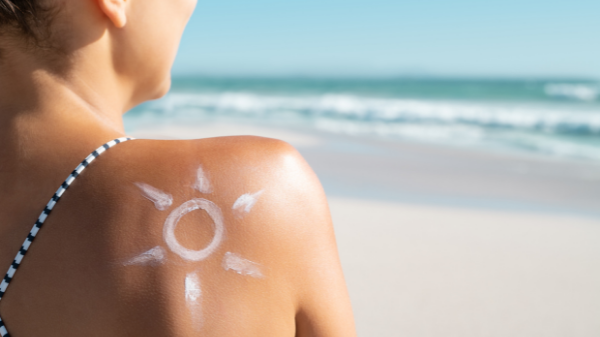When one thinks of sunburn it is often imagined that the surface of the skin would turn pink and tender, though what most people aren’t aware of is that by the time the effects are visible and felt, the cellular and DNA damage (from UVA and UVB sun rays) has already been done, commonly resulting in wrinkles, acne, hyper-pigmentation, freckles and blemishes.
If you’re unsure which ingredients to look for when choosing a makeup or skincare product to wear during the day, here are the six best ingredients that will prevent, counter and protect the skin from sunburn and ageing spots.
1. Titanium dioxide or zinc oxide
Unlike the more commonly used chemical sunscreens, mineral sunblocks contain titanium dioxide or zinc oxide which work to deflect the sun’s rays (rather than just filter out harmful radiation). However, the thick texture of mineral sunblocks may not be comfortable to wear, in this case, a ‘broad spectrum’ chemical sunscreen (SPF 30) is enough to filter out 97 percent of harmful UV rays from the sun.
2. AHA and BHA acids
AHA acids (glycolic, lactic, citric, malic and mandelic) and BHA acids (salicylic) are chemical compounds that can do wonders for the complexion, working deep in the dermis to clear, brighten and smoothen the skin — ultimately reinforcing the effects of your sun-protective skincare products.
Although these acids are neither photosensitive, nor photosensitising, which means that they do not harm the skin when exposed to sunlight, they do leave the skin sensitive and vulnerable after treatment — they are, after all, potent chemical peels that exfoliate the skin. Which is why applying sunblock or sunscreen is significantly important after using AHAs or BHAs to keep the skin shielded from harmful UVA and UVB rays.
3. Aloe vera
A common relief for sunburn is lathering a generous layer of aloe vera on the skin. The properties of this natural plant not only offers a cool soothing relief to sunburnt skin but also lends its healing effects to mild burns. This ingredient also helps moisturise the outer layer of the skin, to reduce peeling and protect the skin from further damage during recovery.
4. Hyaluronic acid
Another soothing ingredient that is widely popular for its moisturising effects is hyaluronic acid which helps reinfornce the edermis’ protective layer from skin damage. This happens when the hyaluronic acid is absorbed into the body and broken down by the body’s enzyme called hyaluronidase, then it is built back up again giving the skin a protective layer from the outside in.
5. Vitamin C
Vitamin C in cosmetics and skincare are ingredients that help neutralise free radicals and prevents photoaging (ageing spots). Although they are photosensitive, meaning that its colour, texture and fragrance may change when exposed to sunlight, they are not photosensitising, which means that it will not provoke a negative response from the skin such as allergies and irritations like those caused by Vitamin A derivatives or essential oils such as bergamot, verbena, cumin, ginger, lemon, and orange.
6. Annato (Bixa Orellana)
Often a feature that is less focused on during skincare, the lips are also subject to the effects of the sun. Annato, despite its deep red pigmentation, is an ingredient that derives from the seeds of the commonly known ‘lipstick tree’, otherwise known as achiote tree. Commonly found in lipsticks, as well as shampoos and skincare products, its properties trigger a cellular response that helps protect the skin from UV light damage.
Read similar articles by clicking the titles below:
Skincare Secrets: Five beauty truths that the industry won’t tell you



